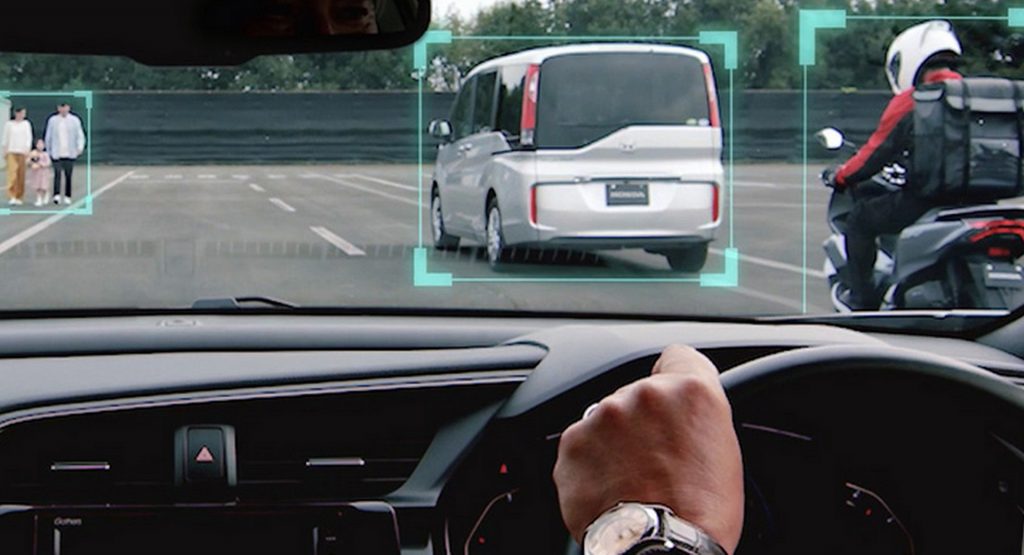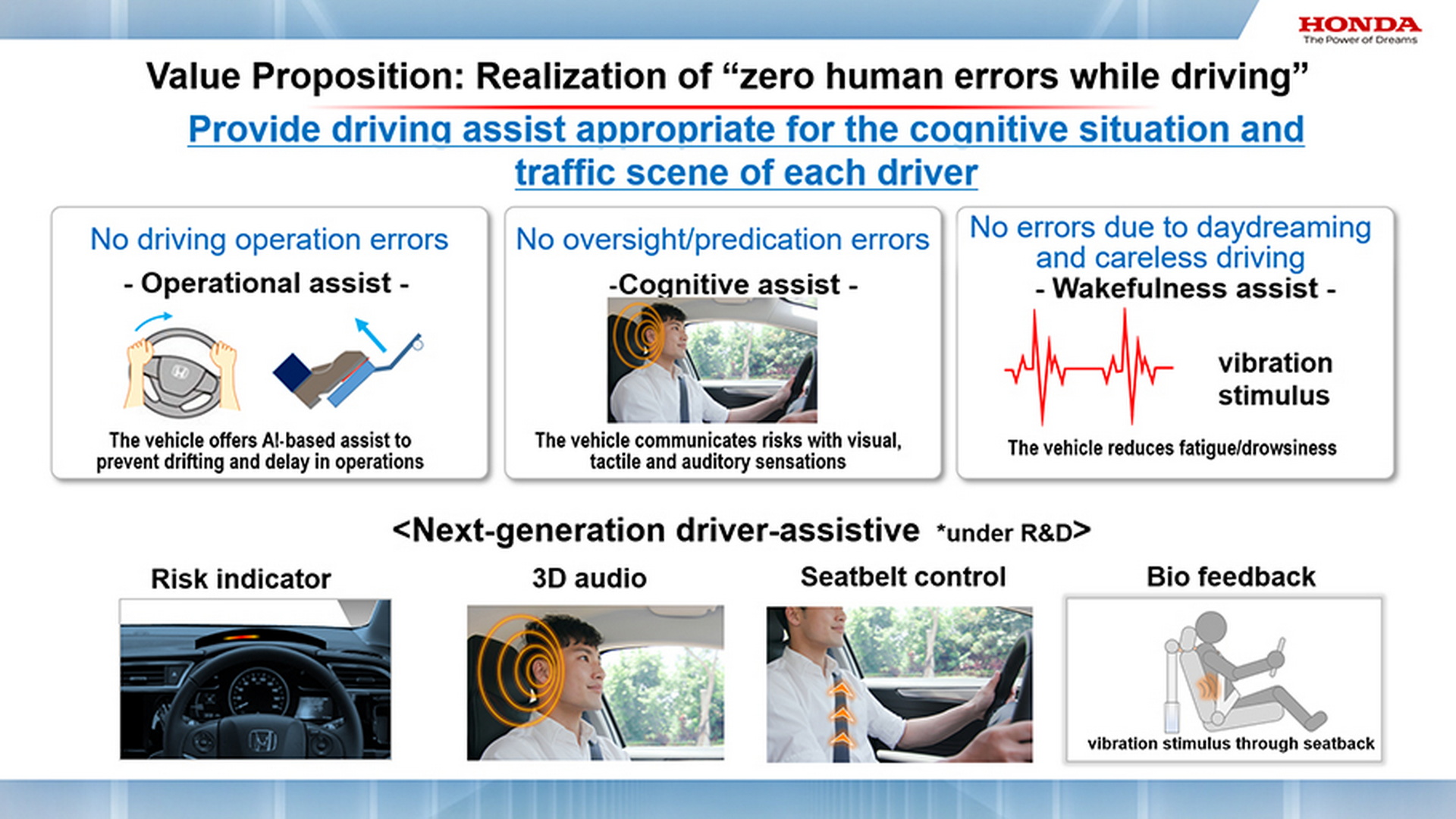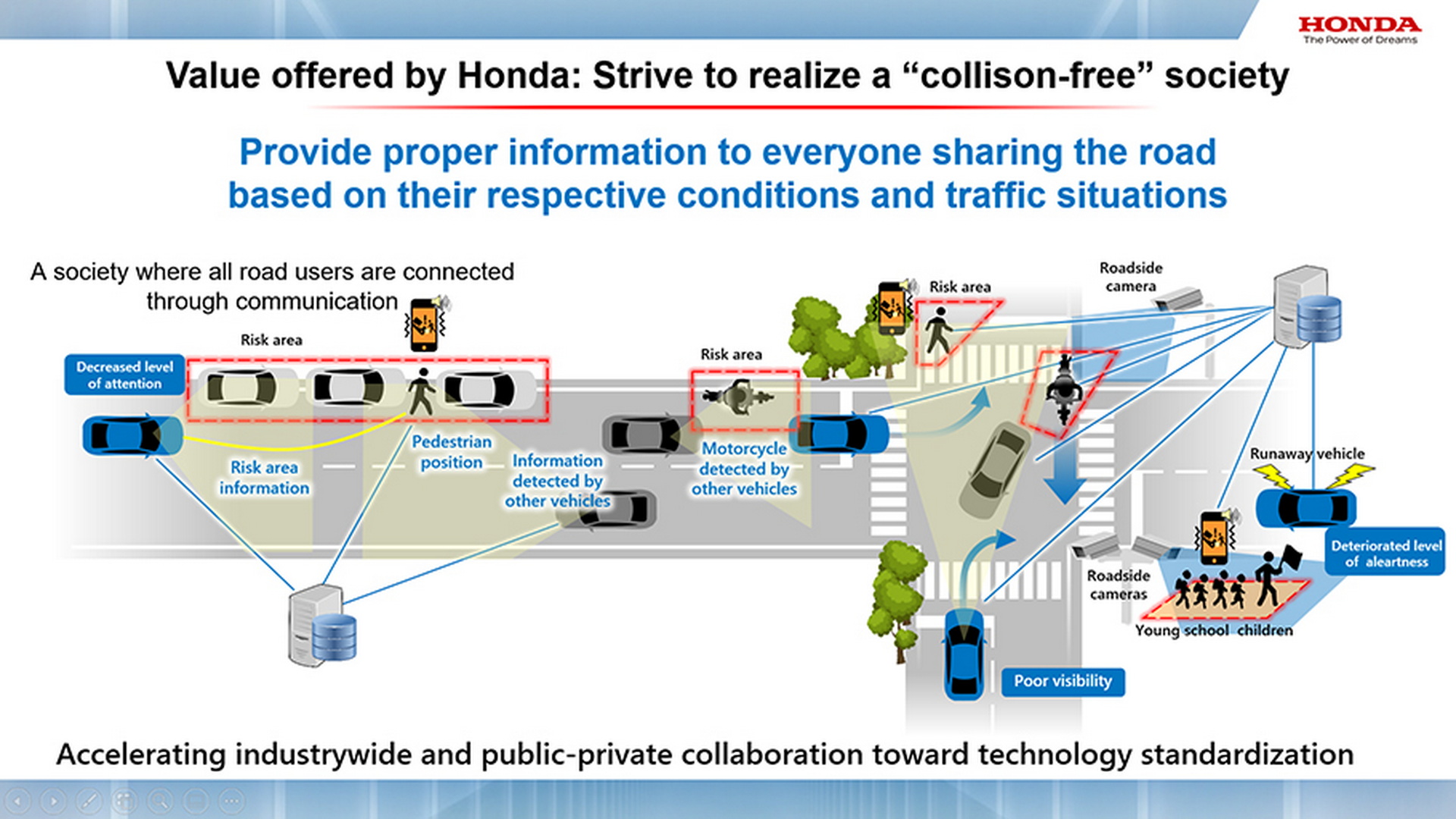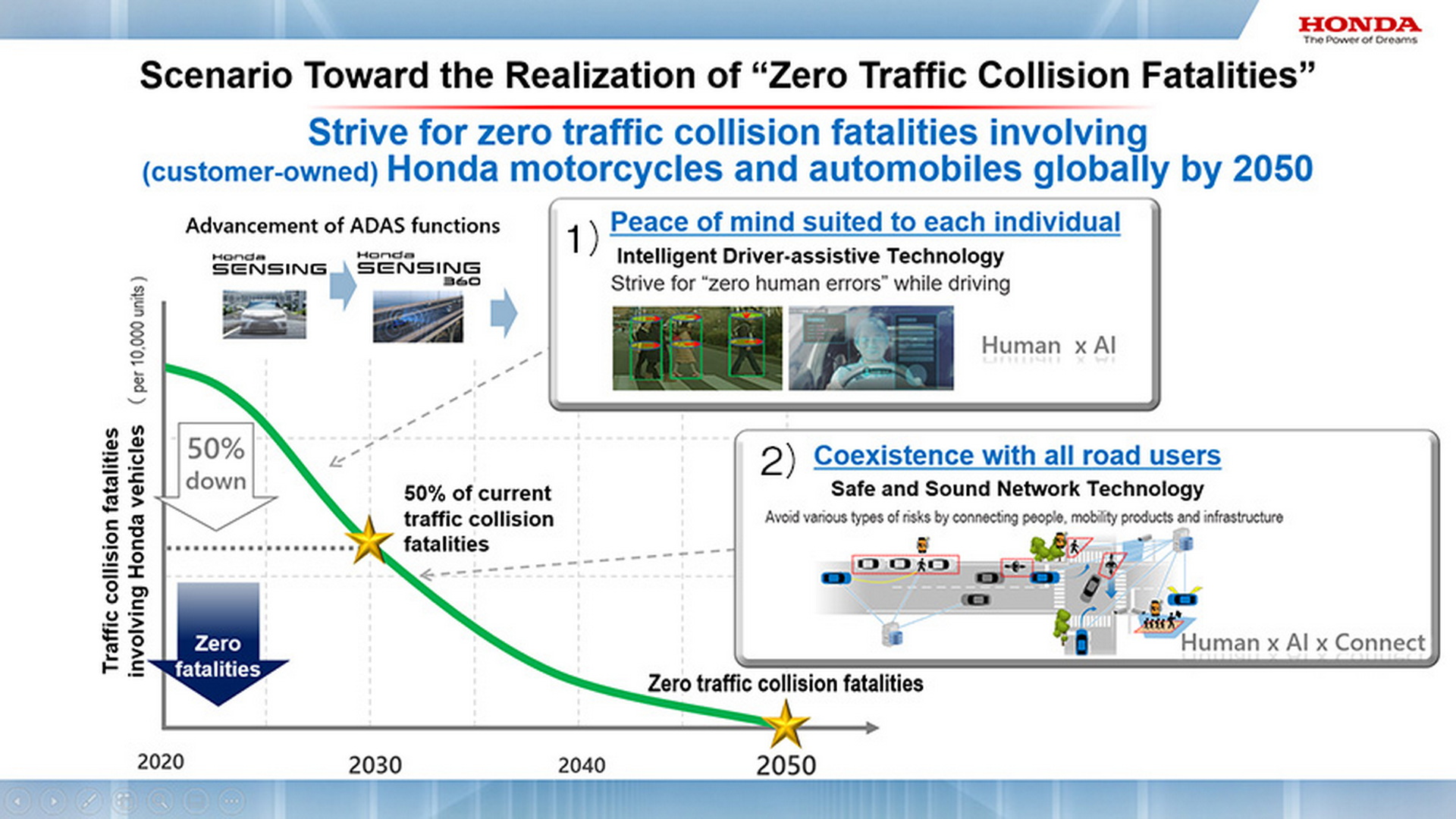Honda unveiled the direction it is heading with the development of its advanced safety technology suite. The tech is designed with a view to realize its vision of halving traffic fatalities involving its vehicles globally by 2030 and eliminating them by 2030.
The first step will involve artificial intelligence (AI) and is being designed to monitor both the road and the driver. In order to understand the underlying causes of driving errors, Honda has been using fMRI technology to study the driver’s brain and analyze risk-taking behaviors.
Through that, Honda has developed “Intelligent Driver-Assistive Technology” that uses advanced driver assistance system (ADAS) sensors and cameras to monitor the road and the driver. It then attempts to detect driving risks and determine optimal driving behavior on a real-time basis. From there, it offers assistance suited to the cognitive state of each driver and traffic situations.
Read Also: Honda Unveils Omnidirectional “Sensing 360” Safety Tech
The automaker is also planning to develop the technology to create next-generation ADAS tech to keep the driver’s attention from drifting and prevent delays in operation. It also hopes to use seatbelt controls and 3D audio to communicate risks on the road to drivers, and to use vibration stimulus in the seats and bio-feedback to address driver fatigue and drowsiness.
Honda says it will focus on developing the underlying technology behind these applications in the first half of the ’20s and will then launch the practical applications in the second half of the decade. It hopes to use these technologies to reduce human errors in driving, which account for 90 percent of traffic collisions.
In order to better understand road conditions, meanwhile, Honda will also invest in V2X technologies that connect vehicles to other road users via communication networks. By using information from roadside cameras, onboard cameras of other vehicles, and smartphones, data can be aggregated to offer drivers information about their traffic environment. The automaker plans to use AI to simulate the behaviors of road users at high risk of a collision and take action to support the driver with information to help avoid risk.
This technology, Honda predicts, won’t be ready for real-world implementation until the 2030s, but it will spend the first half of this decade developing it and the second half to accelerate industry-wide public-private collaboration to standardize it.
“Striving to completely eliminate mobility risks for everyone sharing the road, Honda will offer safety and peace of mind of each and every road user as a new value,” said Keiji Ohtsu, President and Representative Director of Honda R&D. For the realization of a collision-free society where all road users care for each other and the freedom of mobility becomes possible, we will further accelerate our industry-wide and public-private initiatives.”







